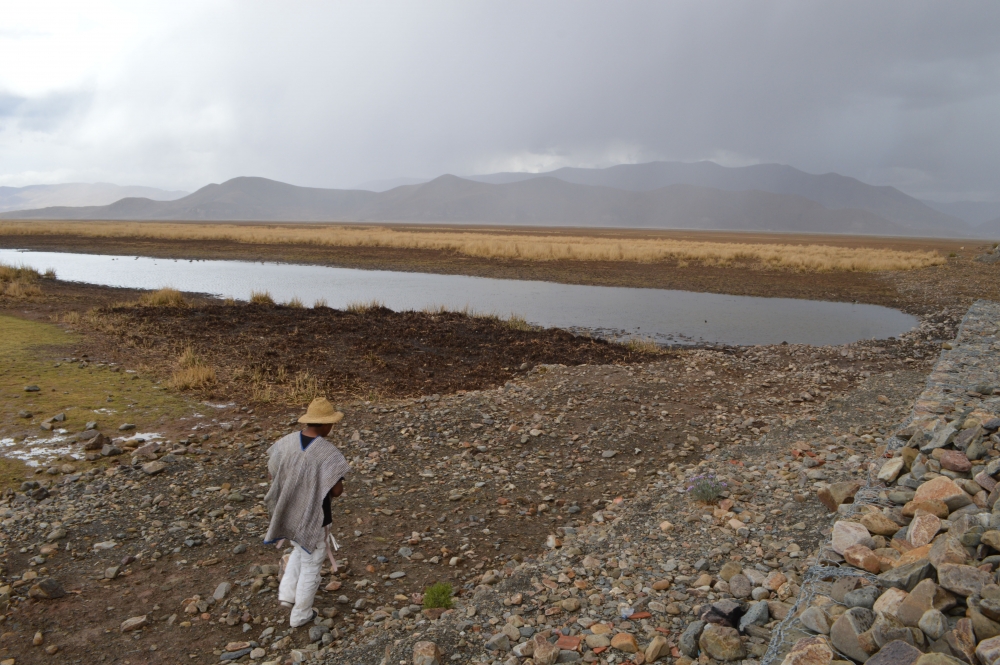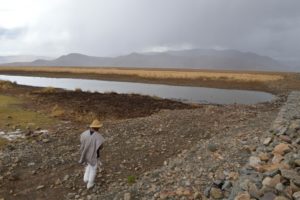
A local campesino looks out on what remains of the Desaguadero River. Lake Poopó was once Bolivia's second largest lake, after Titicaca—the two connected by the Desaguadero. Now climate change has melted the Andean glaciers that fed Poopó. Water from its tributaries has been diverted for mining and agriculture. But it was the country’s worst drought in 25 years that dried it up completely—threatening indigenous communities that have for centuries depended on it for fishing and agriculture. Amy Booth reports for IRIN.
Photo: Amy Booth/IIRIN
See full story…





